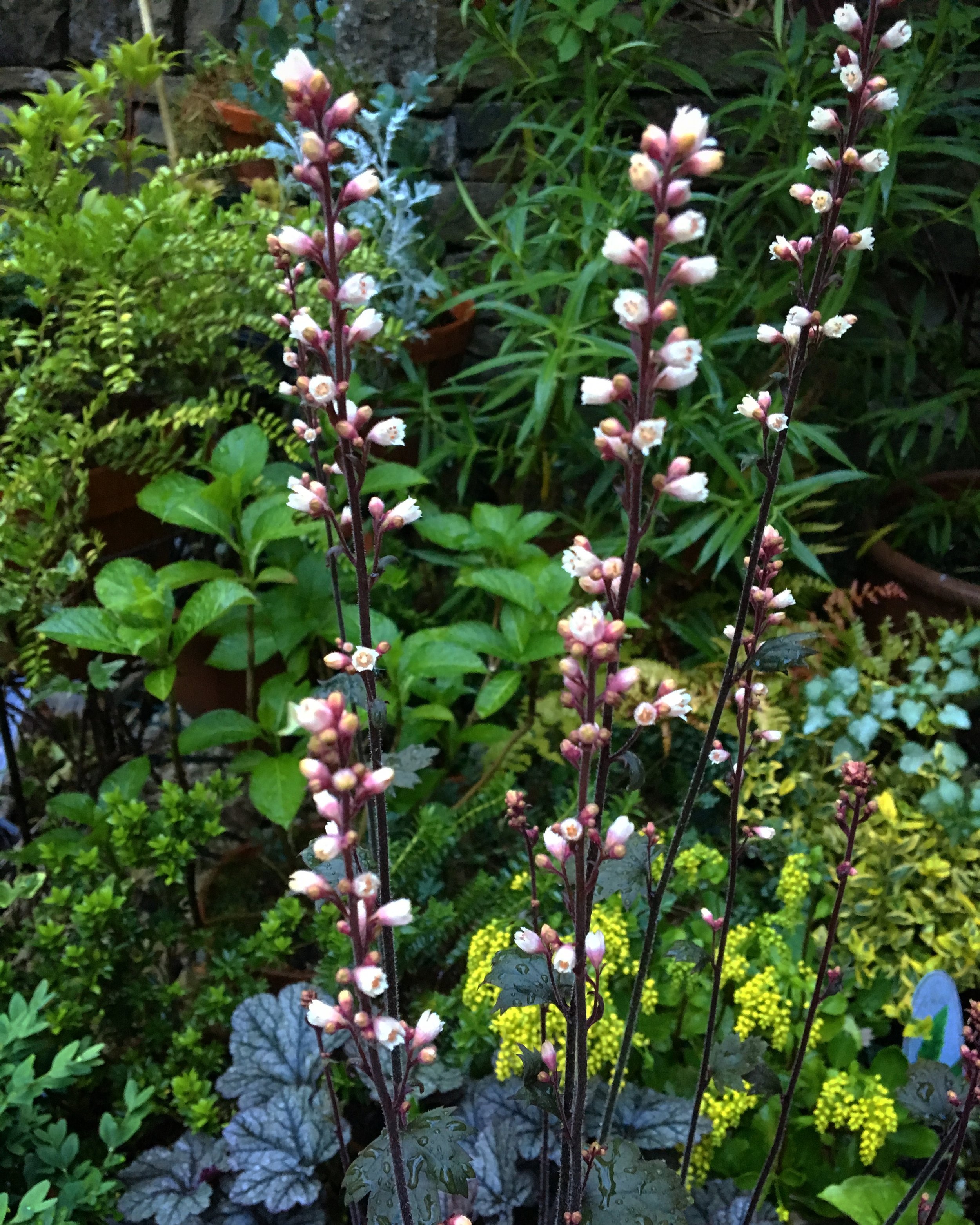An Organic Canvas of Soil and Soul
Bladder campion (Silene vulgaris), one of several new plants I’m experimenting with this year. Their rounded shape and vivid whiteness offsets strikingly against the different greens of leaves and ferns in the background.
A thousand visual soliloquies that combine to weave a powerful narrative: gardening is a silent act of creativity. And it’s also a pastime that is experiencing somewhat of a renaissance. And this resurgence is truly multi-faceted. From the hashtags and hipsters of Instagram that are fuelling a thriving trade in exotic houseplants, to the swathes of gentle souls recognising that gardening offers true freedom from frenetic living, gardening is very much in vogue.
A real success story from my local market last summer. Its common name of Lamb’s tail (Chiastophyllum oppositifolium) needs no explanation. Its hanging fronds form clumps of fascination: the red and silver of the huechera (silver scrolls) in the background give it an even crisper vividness.
Cultivating curiosity in the garden (or a balcony, where my early exploits took place) is increasingly offering people a raft of reasons to re-connect with nature. And for me, that can only be a good thing. Slower living, reconnection with food, the need for patience in a throwaway world: gardening is a teacher we would all do well to heed.
But this article seeks to celebrate the creativity that gardening can offer: a call to arms to embrace the aesthetically pleasing and commit to a life of creative experimentation. I guarantee that your soul – and your soil – will be all the richer for it.
Huechera (siver scrolls). Purchased last summer for its evergreen nature, although that label is somewhat of a misnomer. Silver, green and a warm maroon underneath, this plant surprised me this year when it issued forth great stems of budding flowers. A shared favourite of both myself, and the many bees that visit it contentedly throughout these warm days.
Finding your own eye is key. After a decade of gardening (from crops in pots, an allotment, to my humble garden), I’m only just starting to scrape the surface in terms of what I truly like. And what you like will be different. So much of garden ‘design’ and ‘landscape gardening’ can feel elitist and isolating; dictatorial: I urge you to pursue what you like with joyful abandon; creativity, not conformity.
Secondly, anyone who knows me will know that I like to wax lyrical about the joy of pots. Tiny canvases, they offer a mobility that affords a freedom and playfulness to proceedings. As seasons progress, plants bloom at different times (bolt at different times), flower at different times: pots offer the ability to re-create displays and move things to create new micro landscapes.
Embrace beautiful failure. I’m in my eighth summer in the Peak District and I’m still watching glorious disasters unfurl and unfold in the garden! Experimentation is part – perhaps the – joy of creativity in any discipline. So many of the plants, structures and arrangements that I’ve developed lifelong love for, have been serendipitous, accidental, stumbled upon by chance. Sticking to ‘guaranteed results’ results in precisely that: a formulaic act with all mystery surgically removed.
Get started. I germinated my passion for horticulture on a balcony in Hackney, growing vegetables and flowers in a space that was smaller than a standard-sized double bed. It can be oh-so-easy to feel that you don’t have a big enough space, so if further validation is needed, seek out the small gardens feature on this series of Gardeners’ World.
And lastly, I’d urge everyone to focus on the details, rather than the overall picture. Embrace the small details. One of the many pleasures I derive from my own tiny garden, is the micro, rather than the macro. Of course, my aim is to nurture a vista of totality, but my joy is in the tiny details. The bladder wort that is finally in bloom; the lamb’s tail that attracts an endless cycle of tireless bees; the meadow buttercups that bask in the stored heat of the drystone wall: a microcosm of magnificence.
Plants offer a canvas of creativity that is fluid, continual and indulgent: if you possess a creative bent, and even the smallest inkling of love for nature, I urge you to experiment with the colours, shapes, textures and structures that gardening affords. Your outlook will be both physically and mentally all the better for it.



